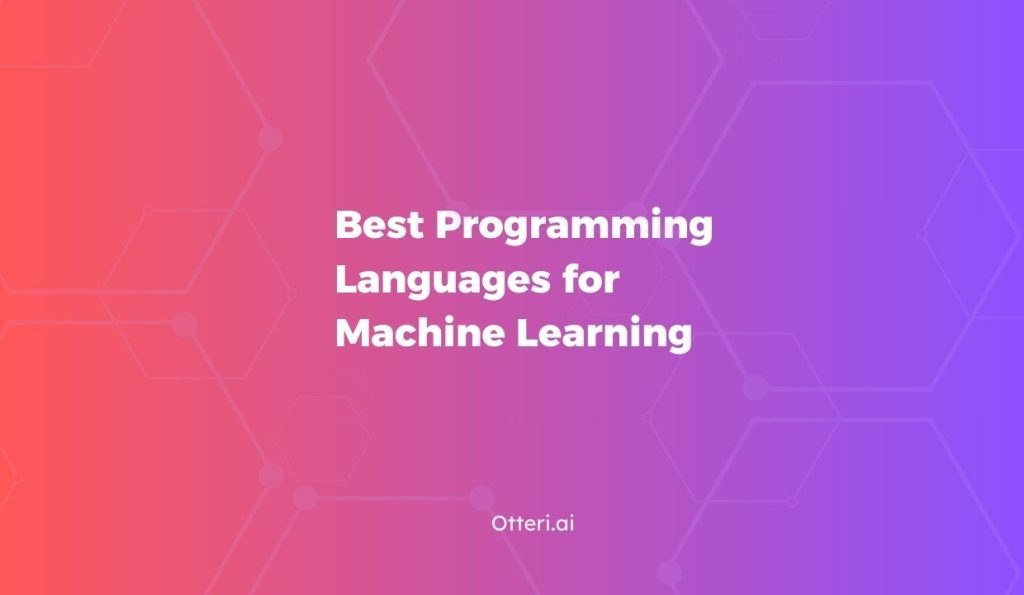
The top programming languages used in machine learning and how Otteri.ai helps teams build smarter, faster, and more efficient AI solutions.
Machine learning has become an essential part of modern business and technology. From product recommendations to fraud detection, companies rely on machine learning to solve real-world problems. But none of these solutions exist without code. Choosing the right programming language can significantly impact how models are built, trained, and deployed.
Machine learning systems across industries. Based on our experience, here are the most commonly used programming languages for machine learning and how they fit into different use cases.
Python – Versatile and Beginner-Friendly
Python is the most widely used language for machine learning. It’s known for its simplicity and powerful libraries that support all stages of the ML pipeline.
Python works well for both beginners and advanced users. Libraries like TensorFlow, PyTorch, sci-kit-learn, and pandas make tasks like data cleaning, model training, and deployment straightforward. Python’s popularity also means there’s a large support community and plenty of tutorials, making it a safe and scalable choice.
R – Designed for Data Analysis
R is a language built for statistical computing and visualization. It’s often used by researchers, analysts, and data scientists who focus more on statistical modeling than production deployment.
If your machine learning workflow involves a lot of data exploration and statistical reporting, R can be a valuable asset. Tools like caret, randomForest, and ggplot2 allow deep insight into model performance.
Java – Scalable and Production-Ready
Java might not be the first language that comes to mind for ML, but it’s a solid choice when performance and scalability are priorities.
Many enterprise systems are built in Java, and using it for machine learning means easier integration with existing infrastructure. Libraries like Weka and Deeplearning4j provide the necessary tools for building ML models in Java. It’s also compatible with big data platforms like Apache Spark and Hadoop.
Julia – High-Speed and High-Performance
Julia is gaining attention in the ML community because of its performance. It’s designed for high-performance numerical and scientific computing and works well for projects that require heavy computation.
Julia can be faster than Python and R in many tasks, and it supports distributed computing out of the box. It’s not as mature in terms of libraries, but it’s growing quickly.
C++ – For Speed and Control
C++ is rarely used for building machine learning models from scratch these days, but it remains crucial in performance-sensitive applications. Many underlying ML libraries, including TensorFlow, are written in C++.
Developers turn to C++ when they need fine control over system resources or want to optimize performance in edge computing, robotics, or embedded systems.
JavaScript – Machine Learning in the Browser
JavaScript is becoming more relevant to machine learning, especially for interactive applications. Tools like TensorFlow.js allow models to run directly in a browser without a server.
This makes it useful for real-time predictions on websites or mobile apps. While it’s not meant for training large models, JavaScript is perfect for front-end deployment.
What to Consider When Choosing a Language
The right language depends on several factors:
Team expertise: What languages does your team already know?
Performance needs: Do you need real-time speed or batch processing?
Deployment environment: Will your model run on a server, a browser, or an embedded system?
Tooling and library support: Are mature libraries available for your use case?
It’s built to support multiple languages and frameworks, allowing teams to build and deploy models in the tools they’re already comfortable using.
Conclusion
Machine learning is a collaborative process, and different languages serve different purposes. Whether you’re building prototypes in Python, analyzing data in R, scaling with Java, experimenting with Julia, optimizing with C++, or deploying to browsers with JavaScript—there’s a language that fits your needs.
Otteri.ai provides a platform where all these tools come together, helping teams move from experimentation to real-world deployment with ease.
Explore how Otteri.ai can support your next project.